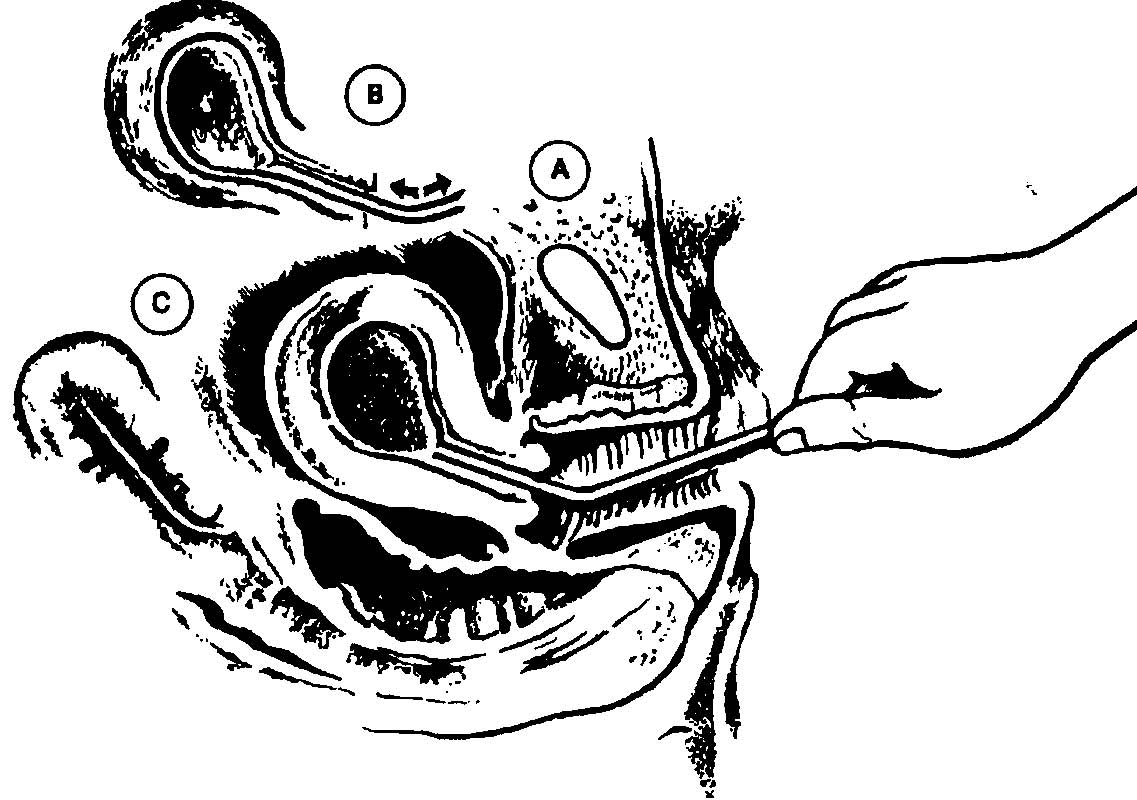Special Surgical Procedures II
LESSON 2: Procedures in Gynecological and Obstetrical Surgery
Section Ii:
2-25
2-25. UTERINE ASPIRATION (SUCTION CURETTAGE)
a. General. This operation involves the vacuum aspiration of the contents of the uterus. This has proven to be a safe and effective method for early termination of pregnancy and for use in missed and incomplete abortions. Advantages include less dilatation of the cervix, less damage to the uterus, less blood loss, less chance of uterine perforation, and reduced danger of infection.
b. Patient Preparation. The patient is placed in the lithotomy position under general anesthetic. An external and internal vaginal prep is done.
c. Operative Procedure.
(1) The cervix is exposed using an Auvard weighted speculum and an anterior retractor; then the cervix is grasped with a sharp tenaculum and drawn toward the introitus (see figure 2-6).
Figure 2-6. Uterine aspiration.
A-Insertion of the cannula.
B-Gentle suction motion to aspirate contents.
C-Uterus evacuated.
(2) The cervix is dilated in the routine manner, allowing 1 mm of cannula diameter for each week of pregnancy.
(3) The appropriate sized cannula is then inserted into the uterus until the sac is encountered. The vacuum is turned on with immediate disruption and aspiration of the contents. Continued gentle motion of the cannula will remove the entire uterine contents.
(4) Depending on the diagnosis, conventional curettage may then be employed.
(5) Retractors and tenaculum are withdrawn; a perineal pad is applied.
(6) The specimen is contained in the vacuum bottle, from which it is removed for laboratory examination.


